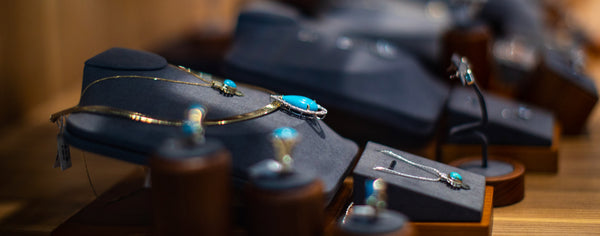Have you ever taken off your engagement ring only to discover a green mark on your finger? This discoloration can be puzzling and sometimes worrisome. You're not alone in this experience, and it's not unusual for jewelry wearers to wonder why this happens. While it might seem alarming at first, understanding the reason behind this common issue can put your mind at ease and help you know what to do about it.
This article delves into the reasons your engagement ring might leave a green hue on your skin and explores various factors contributing to this occurrence. From the chemical reactions between metals and your skin to the environmental influences at play, we'll cover everything you need to know. Plus, we'll discuss how to prevent it and explore solutions if you're already seeing green.
Why Does It Happen?
The green tint left on your finger is usually harmless but can be an inconvenience. It mainly results from a chemical reaction between your skin and certain metals used in jewelry. Metals like copper, common in various jewelry alloys, can oxidize when exposed to moisture, lotion, or even just the air. This oxidation is what causes that green stain on your skin.
While pure gold and platinum are less likely to cause this effect, many engagement rings mix several metals to increase strength and reduce cost. Some common engagement ring metals include copper, nickel, and brass. These metals are prone to react with your skin. The resulting reaction can leave behind that telltale green mark, especially if you sweat or regularly wash your hands while wearing the ring.
Factors Contributing to Discoloration
1. Body Chemistry
- People have different body chemistries that can enhance or reduce the chance of discoloration. If your skin tends to be more acidic, it's more likely you'll see a reaction with certain metals.
- Some individuals may naturally sweat more, which increases moisture exposure to the ring, leading to a chemical reaction.
2. Environmental Factors
- Consider the environment where you often wear your ring. Humidity, exposure to cleaning products, and even perfumes or lotions can impact how a ring reacts with your skin.
- Moisture, whether from washing hands or sweating during exercise, can speed up the oxidation process, particularly with rings containing copper.
Understanding these factors can help you identify why your ring may be causing discoloration and guide you in selecting materials better suited to your lifestyle. Recognizing these elements is the first step toward managing and minimizing such reactions, ensuring your engagement ring remains a beautiful and treasured piece without leaving any unwanted surprises on your skin.
How to Prevent Your Engagement Ring from Turning Your Finger Green
Worried about that green tint? You aren’t alone, and fortunately, there are simple steps to avoid this inconvenience.
Choose High-Quality Metals
1. Opt for Platinum or Pure Gold: These metals are less likely to cause a reaction, making them ideal for those with sensitive skin.
2. Consider Titanium or Tungsten: Known for durability and skin-friendliness, these metals offer style without the worry of discoloration.
3. Stay Away from Nickel: Often found in gold alloys, nickel can irritate your skin and lead to that unwelcome green tint.
Proper Ring Care
Taking care of your ring isn't just about keeping it bright and shiny. Proper care helps prevent unexpected reactions.
- Regular Cleaning: Gentle cleaning with mild soap and water can remove any substances causing oxidation.
- Remove Before Exposing to Moisture: Take off your ring while washing hands, applying lotion, or during workouts.
- Avoid Harsh Chemicals: Perfumes, hair products, and cleaning agents can trigger metal reactions.
Protective Measures
- Jewelry Coatings: Consider adding a hypoallergenic clear coat to your ring's inner surface. It acts as a barrier between your skin and the metal.
- Adjusting Fit: A proper fit reduces skin contact and lessens the chance of moisture getting trapped between the ring and your skin.
What to Do If It Happens
Even with preventive measures, you might still find your finger turning green. Here’s how to deal with it swiftly.
Immediate Steps
- Clean Your Skin: Wash your finger with mild soap and water to remove any residue.
- Apply Lotion: A gentle, non-scented lotion can soothe irritated skin and prevent dryness.
Long-Term Solutions
- Replating or Resizing: Consider replating the ring with a protective layer or resizing it for better comfort.
- Material Swap: If certain materials persistently irritate your skin, discuss remaking the ring with skin-friendly options.
Understanding these practical solutions ensures your engagement ring stays as delightful on your finger as it is to your eyes.
Crafting Engagement Rings That Won’t Compromise Your Comfort
Choosing the right materials for an engagement ring is about more than just aesthetics. It’s about comfort and peace of mind, too. By prioritizing high-quality metals and mindful design, you can enjoy a ring that adds joy, not discomfort, to your everyday life. Collaborating with expert jewelers provides insight into selecting materials suited to your unique skin and lifestyle. Remember, investing in quality and personal comfort ensures your special piece continues to symbolize love without complications.
Make your engagement moment truly special with a ring that combines beauty with comfort. Explore timeless rings for engagements at John Thomas Jewelers and find the perfect blend of elegance and lasting style to celebrate your love.













